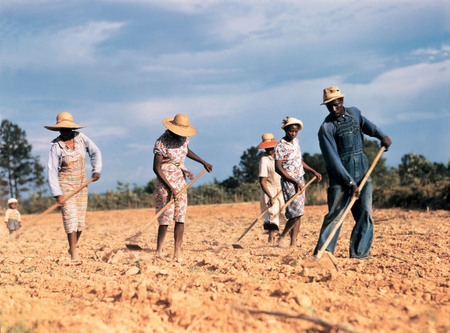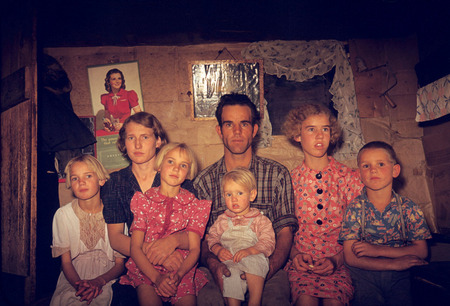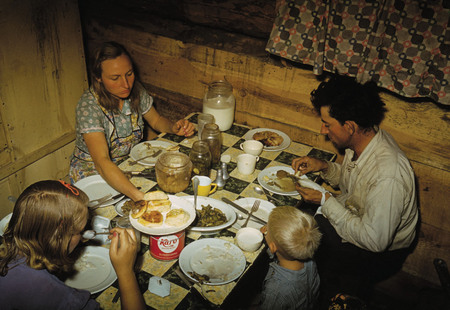Bound for glory. America in color: 1939-1943
Russel Lee, Jack Delano




Jack Delano. Chopping cotton on rented land near White Plains, Greene County, Georgia. 1941. © Library of Congress, Washington
Russel Lee. Jack Whinery, homesteader, and his family, Pie Town, New Mexico. 1940. © Library of Congress, Washington
Russel Lee. The Caudill family eating dinner in their dugout, Pie Town, New Mexico. 1940. © Library of Congress, Washington
Russel Lee. Couples at square dance, McIntosh County, Oklahoma. 1939–1940. © Library of Congress, Washington
Moscow, 31.03.2009—26.04.2009
exhibition is over
Central exhibition hall Manege
1, Manege Square (
www.moscowmanege.ru
Share with friends
Presented by Library of Congress, Washington
Organised by Fotografiemuseum Amsterdam
Supported by Sony Ericsson official cameraphone С 905 Cyber-shotPresented by Library of Congress, Washington
For the press
It was in the United States, in the late 1930s, that without doubt the largest and most significant documentary project in the history of photography took place. Ten photographers worked for eight years to record the appalling conditions under which the rural population lived during the economic crisis of the Great Depression. They were commissioned by the Farm Security Administration (FSA), a government department set up specially to rehouse impoverished farmers. This project resulted in more than 160,000 pictures currently kept at the Library of Congress in Washington. These include classic icons of photographic history such as ‘Migrant Mother’ by Dorothea Lange and work by Walker Evans. A less well known fact is that from 1939 a number of photographers also worked in colour. This resulted in some unique pictures of extremely high quality that represent an important addition to the black-and-white material. This work was recently catalogued and is now being exhibited for the first time in Europe.
Amsterdam’s photography museum Foam is the first to present an exceptional selection of these colour photos in combination with several famous blackand-white pictures. The show was compiled in close cooperation with the Library of Congress. Foam is also the official representative of the Library of Congress for this unique exhibition in Europe.
What the Farmer Security Administration tried to achieve by commissioning those twelve photographers in 1935 was ostensibly quite simple: to record the poverty of the rural population of the United States using the relatively new medium of photography. Political motives played a major role: their hidden agenda was to garner support in Congress and among the American people for the controversial policy of compulsory rehousing of poor farmers.
As the project progressed, the results began to show an increasingly accurate picture. This was more than just a survey of the agricultural sector in the United States; it showed the lives of millions of industrious people who worked hard to ensure that there would bread on the table — in mining towns, mountain villages, new settlements and the major urban agglomerations. What these photos showed was a continuous and unrelenting struggle for a better life and a belief in a better future. The FSA’s photos provide a visual snapshot of an era in American history.
Only 644 colour photos have survived from the FSA’s most active period (it was later to become the Office of War Information). For decades this material remained hidden in the bureaucratic labyrinths of Congress in Washington. It is only recently that they were rediscovered. The quality of the photos is remarkably high, and they represent an interesting addition to a part of our collective memory that previously only existed in black and white and shades of grey: the iconic FSA photos which many will immediately recognise were all made in black and white. Today we have an opportunity to enlarge this corpus with new icons in colour.
With thanks to Library of Congress, Washington.



